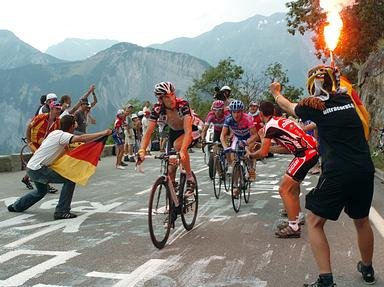Quiz Answer Key and Fun Facts
1. What was the nickname of Djamolodine Abdoujaparov, the Uzbek sprinter, whose crash in the final kilometre of the 1991 Tour de France almost cost him the green jersey?
2. The white jersey competition for the best young rider in the Tour de France is named after which Italian Olympic champion who lost his life during the 1995 Tour?
3. On the slopes of which iconic climb, known as the "Giant of Provence", did Tom Simpson collapse during the 1967 Tour de France?
4. In the 2011 Tour de France, Johnny Hoogerland was defending his lead in which competition (denoted by a polka dot jersey), when became entangled in a barbed wire fence?
5. Known as "Il Campionissimo", which Italian cyclist lost his brother in a fatal crash five days before the start of the 1951 Tour de France?
6. Which great French rider twice lost the Tour de France (1913 and 1919) because of broken front forks on his bicycle?
7. In the Tour de France what experience has been shared by Wim van Est, Luis Ocana and Pascal Simon?
8. Nicknamed the "Eagle of Toledo" for his ability to glide up mountains, which Spanish climber was reluctant to go down them after he had a close encounter with a cactus bush?
9. In 1975, the Belgian rider known as "The Cannibal" attempted to win the Tour de France for the sixth time; his attempt was derailed when he was punched by a spectator. Who was this Belgian rider?
10. In a dogged performance, Sandy Casar won the eighteenth stage of the 2007 Tour de France despite encountering what misfortune?
Source: Author
KayceeKool
This quiz was reviewed by FunTrivia editor
gtho4 before going online.
Any errors found in FunTrivia content are routinely corrected through our feedback system.
